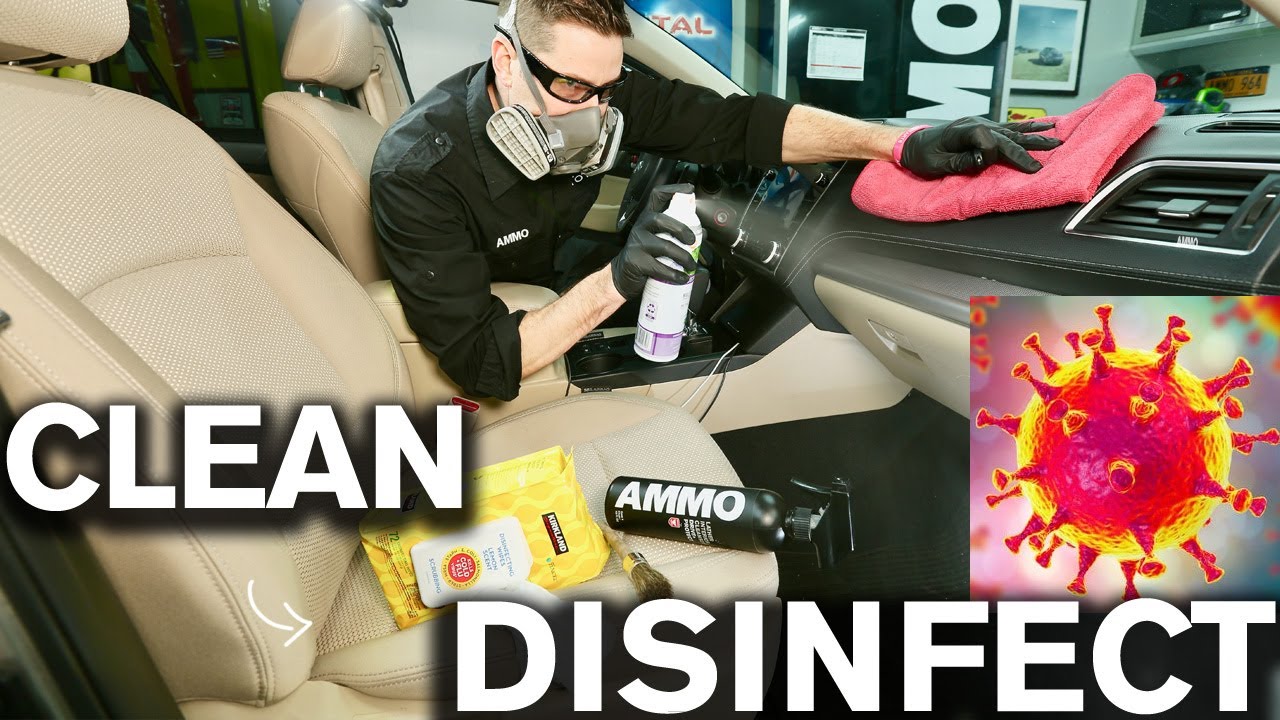How to disinfect your car without destroying its interior
It may be a while before we’re detailing our favorite rides in anticipation of a packed cars and coffee gathering, but even folks hunkering down at home under government ordinances need to make grocery runs. Whether you’re headed to Costco in your Chevy C10 or to the pharmacy in your minivan, you’ll want to keep your ride clean. That’s good practice in general, but before you attack leather seats with Lysol wipes or start bleaching your dash to annihilate any trace of coronavirus, take 15 minutes and watch this video.
Professional detailer and experienced chemist Larry Kosilla of Ammo NYC removes much of the scare of sanitation with his calm, thorough explanation of how and why to disinfect your car. Even if you’re not looking to invest in fancy foaming cleaners, Kosilla’s advice is still highly relevant. Did you know that “clean,” “sanitize,” and“ disinfect” are distinctly different processes, each designed to satisfy a different standard? Cleaning a surface physically removes dirt and germs, but doesn’t chemically kill any of those germs. Sanitizing and disinfecting a surface may or may not remove dirt and grime, and each denotes a different intensity. When you sanitize your hands (for instance), you aren’t killing all of the germs, you’re simply knocking down their numbers to a safe, lower level as determined by public health standards.
There’s a reason we disinfect things with bleach, and don’t wash our hands with it; disinfecting is a take-no-germs-as-prisoners method. A realistic approach for your car’s interior, then, is to clean and then sanitize.
Whether you want to go all Mr. Clean on every interior panel and button or not, focus on the “hotspots” for germs: your steering wheel, interior door handles, cupholders, gear shifter, seat buckles, and radio/climate control buttons. (Only after you’ve attacked these bastions of germiness, the CDC recommends, proceed to less-often contaminated surfaces.)

Before touching any of those hotspots, though, consider the wipe or spray you’re wielding. If it has an EPA registration number on the back label, it’s packing legitimate germ-killing power. Then, read the instructions, paying particular attention to how long the given product is supposed to say on the surface. This is known, in pro speak, as the product’s “dwell time.” Wipe down your car in a rush, and you’ll do only minimal damage to potential germs. Allowing the product the time it needs to do its job—whether sanitizing or disinfecting—is the key here.
Then, test a small, inconspicuous panel in your car: the back of the steering wheel, for instance, or the side bolster of the seat. After the specified amount of dwell time, check for any fading or discoloration in the surface. None? Then you’re good to go.
To preserve your hard sanitizing work and avoid introducing germs back into the environment, wash your hands before entering your vehicle. Keep some hand sanitizer in a compartment if you can, and if all else fails (or is unavailable) wear a clean pair of rubber gloves and dispose them after each drive—just wait to remove them until after you grab that interior handle to exit the vehicle. Oh, and your keys? Bet you didn’t consider those. Worth a wipe-down, as well.
Kosilla also recommends avoiding direct contact with a gas pump handle or button whenever possible. They’re staggeringly dirty on a good day, not to mention the threat they could pose duric a pandemic. Use gloves or a paper towel to grab the pump handle, and use the nozzle to nudge the fuel grade button.
Here’s to keeping ourselves and others safe. Tucking away some sanitizing wisdom for future days is never a bad call.


